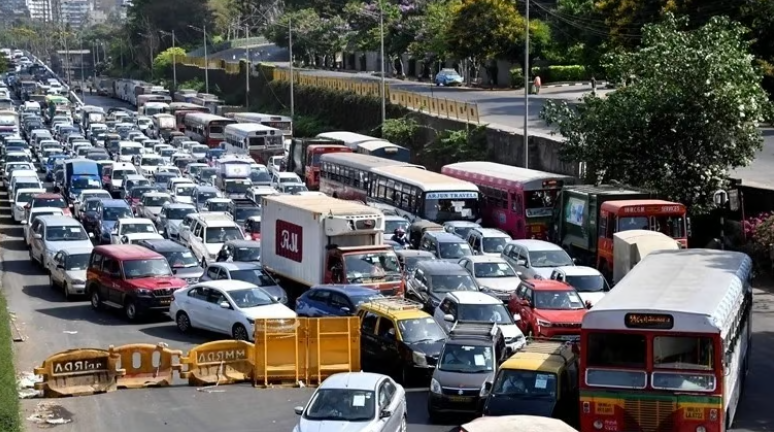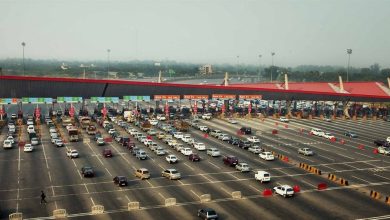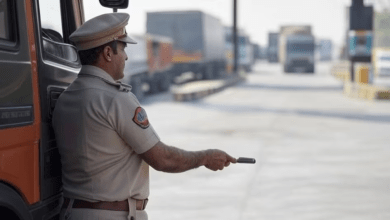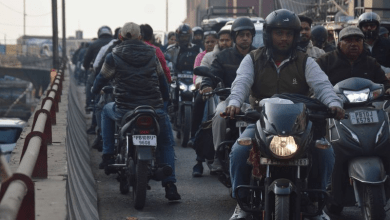Ambazari Bridge Totally Shut, Entire West Nagpur Gridlocked

Ambazari Bridge Traffic: Nagpur has always been a bustling city, but recently, the traffic situation in West Nagpur has reached unprecedented levels of chaos. The closure of the Ambazari Bridge has created a ripple effect, causing gridlock in various parts of the city. Let’s dive into the specifics of this traffic nightmare and explore possible solutions.
The Traffic Conundrum in West Nagpur
Shankar Nagar Square: A Traffic Hotspot
Shankar Nagar Square, typically a busy junction, has become a focal point of frustration for motorists. The closure of the Ambazari Bridge has rerouted significant traffic through this square, causing severe congestion.
LAD Square: Pipeline Work Adding to Woes
To make matters worse, ongoing pipeline work at LAD Square is exacerbating the situation. With half the road cordoned off and large machinery in place, navigating through this area has become a herculean task.
Abhyankar Nagar Square: A Bottleneck
Abhyankar Nagar Square is another area feeling the brunt of the traffic diversion. Long queues of vehicles are now a common sight, with motorists enduring prolonged delays.
The Root of the Problem: Ambazari Bridge Closure
Why the Closure?
The Ambazari Bridge has been closed by the state public works department to dismantle the structure over the Nag River. While necessary, this closure has significantly disrupted the usual traffic flow.
Proposed Alternative Routes
The traffic police proposed alternative routes, such as the road via Subhash Nagar-Mate Square-Abhyankar Nagar-Shankar Nagar for those traveling from Hingna to Sitabuldi, and the route from Hingna T-point to Wadi T-Point via MIDC to reach Amravati Road. However, these alternatives have proven insufficient in alleviating the congestion.
Impact on Daily Life
Commuter Frustration
Motorists have expressed immense frustration with the current traffic situation. Daily commutes that once took minutes now extend to over an hour, significantly impacting productivity and quality of life.
Emergency Services Hampered
The gridlock has also posed serious challenges for emergency services. Ambulances and fire trucks struggle to navigate through the congested roads, risking lives in urgent situations.
Role of Roadside Eateries and Vendors
The Encroachment Issue
Roadside eateries and vendors have further compounded the traffic woes by occupying significant portions of the roads. Despite alerts and efforts to curb these encroachments, the situation persists.
Lack of Enforcement
Motorists have criticized the Nagpur Municipal Corporation (NMC) and zone officials for their lax enforcement of anti-encroachment laws. Many believe there is collusion between officials and unauthorized vendors.
Steps Taken by Authorities
Deployment of Additional Manpower
Deputy Commissioner Shashikant Satao, upon returning from leave, assured the deployment of additional manpower to manage the traffic better. However, the effectiveness of this measure remains to be seen.
Traffic Signal Control
Efforts to control traffic signals and alleviate congestion during peak hours have been implemented. Yet, the sheer volume of vehicles makes it a daunting task.
The Effect on Businesses
Economic Impact
Local businesses in the affected areas are suffering due to decreased customer footfall. The prolonged traffic jams deter shoppers and clients, leading to a decline in revenue.
Vendor Struggles
While roadside vendors contribute to the congestion, they too are struggling as the traffic deters potential customers. It’s a vicious cycle impacting the local economy.
Commuter Adaptations
Two-Wheeler Riders on Footpaths
In desperation, many two-wheeler riders have taken to using footpaths to navigate through the traffic jams. This not only poses safety risks but also highlights the severity of the situation.
Carpooling and Public Transport
Some commuters have started carpooling or using public transport to avoid the hassle of driving through the gridlocked roads. While this helps to some extent, it is not a comprehensive solution.
Long-Term Solutions
Improved Infrastructure
To tackle such issues in the future, there’s a dire need for improved infrastructure. Expanding roads, constructing flyovers, and improving public transportation could be viable solutions.
Better Planning and Coordination
Better planning and coordination among various governmental departments can prevent such chaos. Proactive measures and timely communication with the public are crucial.
The traffic situation in West Nagpur, exacerbated by the closure of the Ambazari Bridge, calls for immediate and effective action. While temporary measures can offer some relief, long-term solutions focusing on infrastructure and enforcement are essential. The authorities must address the root causes of congestion and ensure smoother vehicular movement to alleviate the daily struggles of the city’s residents.
Q1: Why was the Ambazari Bridge closed?
The Ambazari Bridge was closed by the state public works department to dismantle the structure over the Nag River.
Q2: What are the alternative routes suggested by the traffic police?
The traffic police suggested routes via Subhash Nagar-Mate Square-Abhyankar Nagar-Shankar Nagar for those traveling from Hingna to Sitabuldi and the route from Hingna T-point to Wadi T-Point via MIDC to reach Amravati Road.
Q3: How long is the pipeline work at LAD Square expected to last?
The pipeline work at LAD Square is expected to persist for the next 15 to 20 days.
Q4: How has the traffic situation impacted emergency services?
The gridlock has significantly hampered emergency services, with ambulances and fire trucks struggling to navigate through the congested roads.
Q5: What long-term solutions can address the traffic congestion in Nagpur?
Long-term solutions include improving infrastructure, expanding roads, constructing flyovers, enhancing public transportation, and better planning and coordination among governmental departments.









